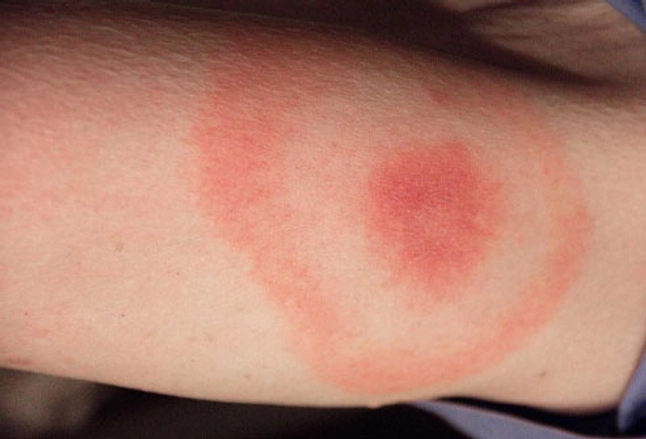What You Need to Know About Bug Bites
Everyone has suffered from that incredibly itchy bite that keeps you awake at night, and no matter what type of bug bite you have, it is good to know what bit you. Learning to identify a bug bite by how it looks and feels will help you know whether to treat the bug bite at home or seek immediate medical care. Most bug bites and stings from common insects are harmless and heal quickly. Here is Houston, some of the common insects that can cause irritating bites are mosquitoes, ticks, fleas, pinyon gnats (aka no-see-ums), and chiggers. Some of these bites can be hard to identify, and how you treat these bites can determine how uncomfortable you are and for how long.
DO NOT SCRATCH: Until you can identify what you have been stung by, try your best not the scratch the bite. Once the skin has been broken the bite is far more likely to become infected.
Below is a quick guide to help you figure out what has bitten you:
Mosquitoes – Mosquito have the most identifiable bite. Their saliva contains proteins that most people react to causing an red and itchy bump. They sniff their victims out and choose them based on their scent. Some mosquitos are around more in the daytime, some at dawn and dusk. Deet based insect repellents are widely seen as the most effective.
 Chiggers – Chiggers are little mites that are commonly found in meadows, golf courses, woodlands, parks and in grasslands around lakes and rivers. Symptoms of chigger bites include intense itching, and flat or raised red bumps on the skin that sometimes appear blistered. When the chigger bites, it inserts its feeding structures and mouth parts into the skin where it injects enzymes into the host skin that destroy the tissue around the bite. The area around the bite then hardens, and they insert a feeding tube, called a sylostome, further into the bite area. They can feed on the skin through this structure for a few days. These bites are usually found around sock lines and belt lines.
Chiggers – Chiggers are little mites that are commonly found in meadows, golf courses, woodlands, parks and in grasslands around lakes and rivers. Symptoms of chigger bites include intense itching, and flat or raised red bumps on the skin that sometimes appear blistered. When the chigger bites, it inserts its feeding structures and mouth parts into the skin where it injects enzymes into the host skin that destroy the tissue around the bite. The area around the bite then hardens, and they insert a feeding tube, called a sylostome, further into the bite area. They can feed on the skin through this structure for a few days. These bites are usually found around sock lines and belt lines.

Ticks – Ticks are tiny creatures that live in woodland and grassy areas, they are particularly prevalent if there are deer and other wildlife. They bite into the skin to feed on blood. Initially they are extremely small, but swell as they eat, eventually becoming pea sized and therefore easier to spot and remove. With a tick, you will probably notice the tick before the bite. In this case, they should be very carefully removed with tweezers or ideally with a proper tick remover, gently pulling without twisting in any way. Ticks carry Lyme Disease, which is a serious illness in humans, characterized by flu like symptoms, lethargy and aches and pains. If you have been bitten by a tick and/or happen to develop a classic bulls eye type rash, which can appear on any part of the body, please seek medical attention. If a doctor can diagnose and treat Lyme Disease quickly, it is possible to make a full recovery. However it can cause paralysis, arthritis, meningitis and severe long-term problems.

Fleas – Fleas are tiny, irritating insects, that like to feed on our blood and that of our pets. Flea bites are small distinctive, red bumps that usually occur in groups of three or four, or in a straight line. Fleas like warm moist areas such as the waist, armpits, breasts, groin, or in the folds of the elbows and knees, but they also nibble the easy to reach areas such as ankles and calves. Fleabites are incredibly itchy, the skin around each bite can be sore or painful and you might develop a rash or hives near the site of a bite. These bites can be confused with Chiggers at times, but the main difference is that a Chigger bite will almost feel hard or scab-like in the center.
 No-See-Ums (aka Pignon Gnats and Biting Midges) – No-See-Um bites generally appear as red-dot multi-bite clusters. Over time, these bites can enlarge into raised welts, up to one to two inches in diameter. Also, note that tender no-see-um welts can linger on your skin for two weeks or more. When comparing no-see-um bites, it’s important to note how long bug bites last. Pay attention to the fact that no-see-um bites appear a day later (or more) in many instances after the initial bite. Also, no-see-um bites tend to cause more pain than than most of these other bug bites.
No-See-Ums (aka Pignon Gnats and Biting Midges) – No-See-Um bites generally appear as red-dot multi-bite clusters. Over time, these bites can enlarge into raised welts, up to one to two inches in diameter. Also, note that tender no-see-um welts can linger on your skin for two weeks or more. When comparing no-see-um bites, it’s important to note how long bug bites last. Pay attention to the fact that no-see-um bites appear a day later (or more) in many instances after the initial bite. Also, no-see-um bites tend to cause more pain than than most of these other bug bites.







